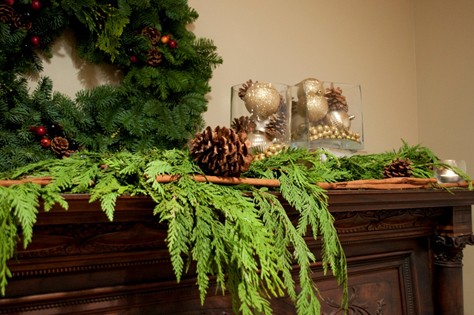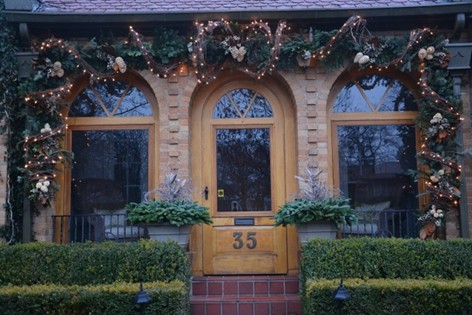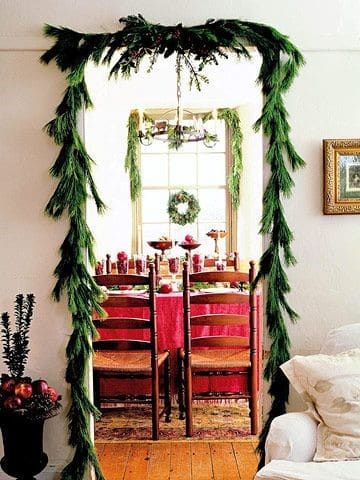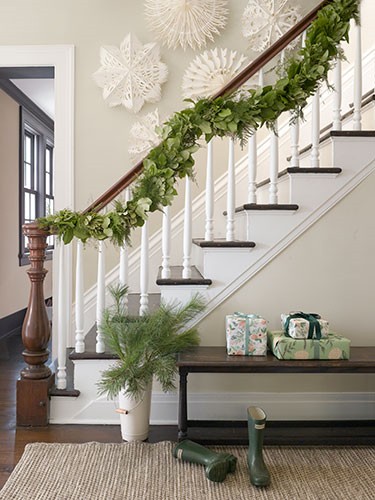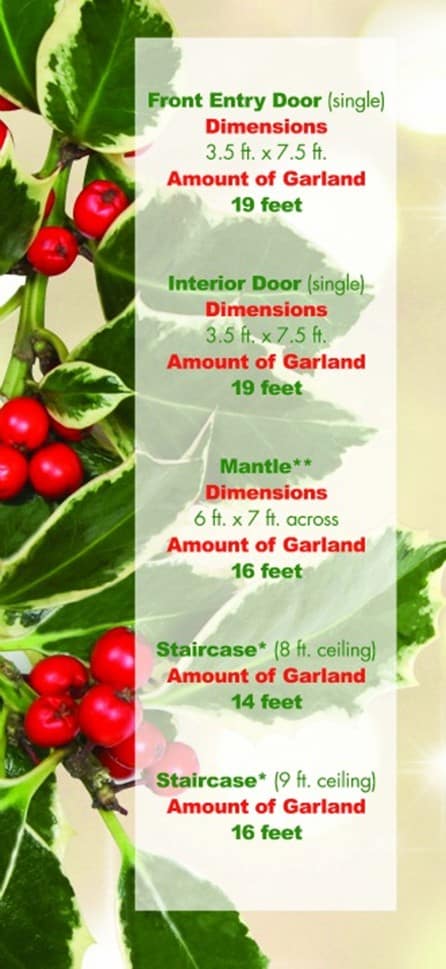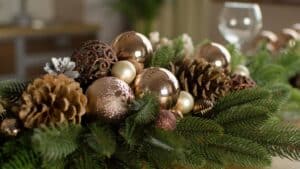
Christmas Garland Guide
Popular Types & Uses For Christmas Garland
Here are some of the many types and uses for Christmas garland. Have a look at the handy chart below; click to download and take it with you when picking out the garland of your choice. This takes the guesswork out of which dimensions to buy for your doors, staircases, and mantles! Get ready to sleigh that garland game!
Cedar Garland- The easiest fresh garland to use for the mantle as it rests flat and spills over the edge of the mantle.
Mixed Cedar Garland- This is the fullest garland. It’s also an excellent choice if you want a little burst of color, as this fresh garland has blue juniper berries mixed in.
Frasier Fir- Many Christmas trees are made of Frasier Fir, so it looks consistent and ties in well with most trees. However, it is one of the thinner garlands, so consider doubling it up and tying it with wire or twine. Frasier fir also exudes that irresistible Christmas tree smell, so you won’t miss out on the aroma even if you go with an artificial one this year.
White Pine- This is another of the thinner garlands, so consider doubling it up again. It is also one of the most traditional-looking garlands. It’s soft, easy to use, and looks great wrapped around mailboxes, columns, and banisters.
Evergreen Garland- A beautiful and fragrant addition to any home’s winter décor. **Note- A roll of grapevine provides incredible stability and strength to an evergreen garland. It also adds a lot of volume to a garland with very little mass.
Magnolia Garland- Mixing in big magnolia blooms can be great for areas with lots of space, like foyers or stairwells, because the flower tends to stand out. For a fuller look, combine magnolia garland with evergreen garland, looping the two together and then draping along the staircase.
**Garland Care Tip ** for best longevity- keep away from heat when used indoors and mist regularly.
We recommend purchasing your Christmas Garland from Burghardt Christmas Tradition.
Check out the photos below for some fresh garland inspiration!
From the office in Atlantic Beach and satellites throughout Northeast Florida, Rockaway Inc proudly serves landscape design clients in Jacksonville, St Augustine, Atlantic Beach, Neptune Beach, Jacksonville Beach, Ponte Vedra, Nocatee, and Fernandina Beach.
